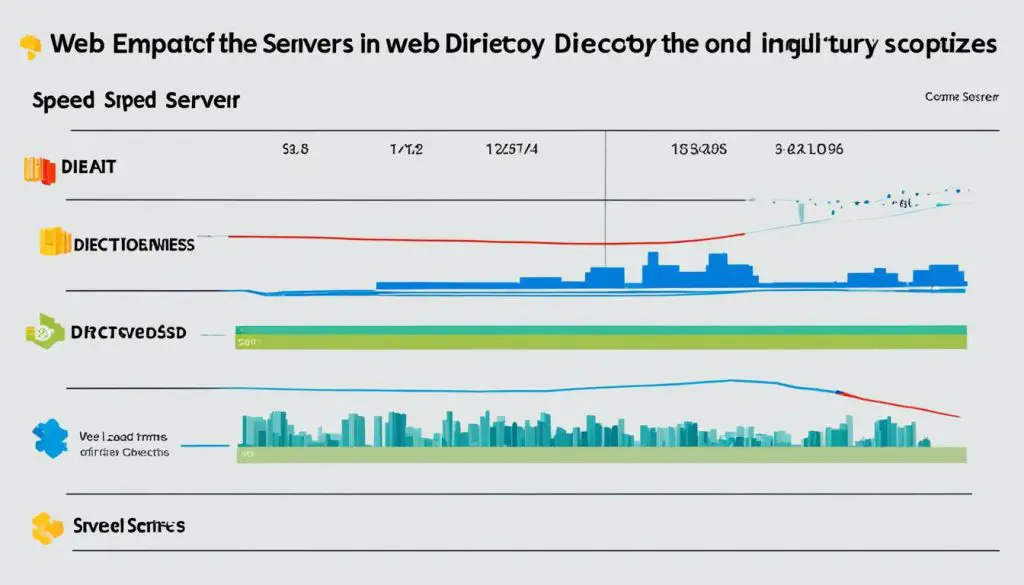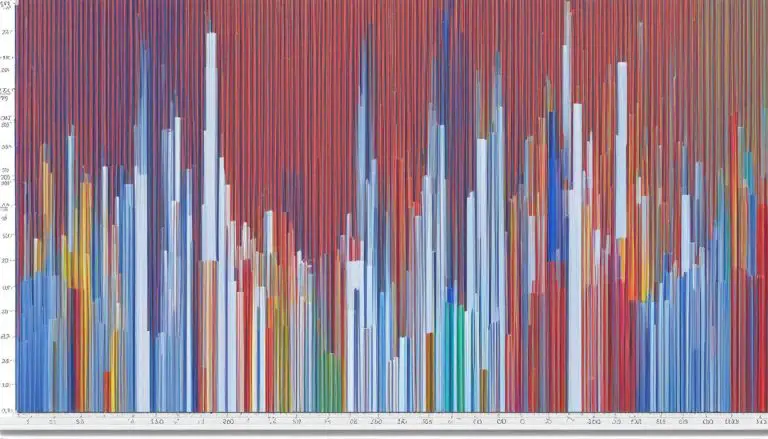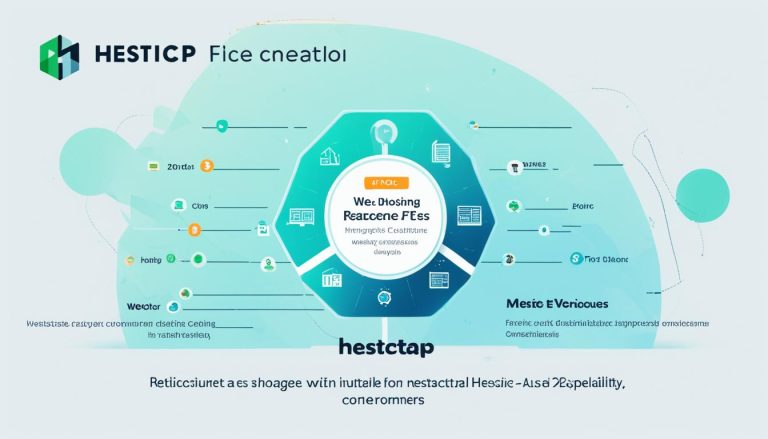Understanding What is Directory Index Explained
If you’ve ever come across a webpage that displays a list of files instead of the usual website content, you may have encountered directory indexing. In this article, I will explain what directory indexing is, its meaning, and its importance for website structure and search engine optimization.
Directory indexing occurs when a URL resolves to a directory that doesn’t have a default file. Instead of seeing a web page, your browser displays a listing of the files within that directory. This listing can be customized and is typically used when there is no specific file designated as the default for that directory.
By enabling directory indexing or having an index file in the web directory, you can avoid a 403 error and allow users to see the directory listing. This can be useful for websites with multiple subdirectories or a large number of files, providing users with a clear view of the content within a directory.
Key Takeaways:
- Directory indexing is when a directory listing of files is displayed in a browser instead of a web page.
- It occurs when a URL resolves to a directory that doesn’t have a default file.
- Enabling directory indexing improves the user experience and allows users to navigate through the website more easily.
- Directory indexing also has SEO benefits as search engines can crawl and index the directory listings.
- To enable directory indexing, a file called .htaccess needs to be created and configured.
Why Directory Indexing is Important for Website Structure
Directory indexing plays a crucial role in organizing and structuring websites, providing a user-friendly experience for visitors. It enables users to easily navigate through directories and access the content they are looking for. This is especially beneficial for websites with multiple subdirectories or a large number of files.
From an SEO perspective, directory indexing holds significant importance. Search engines rely on crawling and indexing to understand the structure and content of a website. By allowing directory listings to be crawled and indexed, websites can improve their visibility and search engine rankings.
There are different types of directory indexes that websites can utilize:
- Static index files: These are manually created HTML files, such as index.html or default.html, that provide a structured overview of the directory’s content. They are fast and efficient, as they do not require additional processing.
- Auto-generated listings: Web servers can generate directory listings automatically based on file names and attributes. These listings can be customized to include additional information, such as file size or modification dates. Auto-generated listings provide an up-to-date view of the directory’s contents but can have resource usage implications.
- Interpreted files: Files like index.php or index.cgi are interpreted by the server, allowing for dynamic generation of directory indexes. These files can include server-side scripting and provide advanced functionality but may have performance considerations.
By leveraging directory indexing and choosing the appropriate index type, websites can enhance the user experience, improve search engine visibility, and ensure efficient resource allocation.
Enabling Directory Indexing on Your Website
To enable directory indexing on your website, you need to create a file called .htaccess and include the line “Options Indexes” in it. This file should be placed in the directory for which you want to enable directory indexing.
By enabling directory indexing, you allow visitors to see the directory listing of files instead of an actual web page. This can be particularly useful when you want to provide users with an overview of the content within a directory or if you don’t have a default file for a particular URL.
To enable directory indexing:
- Create a new file in a text editor and save it as “.htaccess” without the quotes.
- Open the .htaccess file and add the following line of code: Options Indexes.
- Save the changes and upload the .htaccess file to the directory where you want to enable directory indexing.
By including the “Options Indexes” line in the .htaccess file, you are instructing the server to display the directory listing when there is no default file available within the directory.
Note: Make sure that you have proper permissions to create and upload files to the directory where you want to enable directory indexing.
It’s important to consider security implications when enabling directory indexing. If not properly configured, directory indexing can potentially expose sensitive information that is not intended for public access. To mitigate these risks, you can customize the appearance of the directory listing, restrict access to certain directories using passwords or IP whitelisting, or remove sensitive files from the directory altogether.
“Enabling directory indexing can be a powerful way to provide users with an organized view of the files within a directory. However, it’s crucial to pay attention to security measures and ensure that sensitive information is not inadvertently exposed.”
| Pros | Cons |
|---|---|
| Organized view of files | Exposes sensitive information if not properly configured |
| Improved navigation for users | Potential security risks |
| Search engine visibility and indexing | Requires careful customization and configuration |
Different Default Index Page Names
When it comes to default index page names, they can vary depending on the configuration of your web server. However, there are some common names that you may encounter:
- index.html: This is one of the most frequently used default index page names. It is often associated with static HTML websites and is recognized by most web servers.
- index.php: If you are using a server-side scripting language like PHP, you may come across this default index page name. It allows you to incorporate dynamic and interactive elements into your website.
- default.html: This index page name is often used as a default when other options are not available or specified.
It is worth noting that some web servers provide configurable options for index page names. This means that you can specify multiple file names that can serve as the index. In addition, web servers can use content negotiation to automatically pick the best file based on factors such as language preferences. This feature is particularly useful for multilingual websites, as it allows for language-specific index pages.
Regardless of the default index page name you choose or the method your web server uses to determine the index, it is crucial to ensure that the index page name matches the name of your website’s first page. This ensures proper loading and a seamless user experience.
| Default Index Page Names | Description |
|---|---|
| index.html | Common default index page name used for static HTML websites. |
| index.php | Default index page name for websites using PHP or other server-side scripting languages. |
| default.html | Default index page name used when other options are not available. |
Modifying the Directory Index
If your website design application names the homepage something other than index, such as Welcome.html or Home.html, you will need to modify the directory index to match the name of your website’s first page. This can be done using a
1 | .htaccess |
file.
To update the directory index, add the line ”
1 | DirectoryIndex Welcome.html |
” to the
1 | .htaccess |
file in your domain’s document root. This tells the server to load Welcome.html as the first page when the domain is visited.
Modifying the directory index allows you to control which file is loaded as the homepage.
| Directory Index Method | Pros | Cons | ||
|---|---|---|---|---|
Changing the
file |
Easy to implement | Requires understanding of web server configuration | ||
| Renaming the homepage file | Simple solution | May break existing links | ||
| Using URL redirection | Flexible approach | Additional server resource usage |
Security Considerations of Directory Indexing
Directory indexing, when not properly configured, can introduce significant security risks to a website. By automatically generating a listing of files within a directory, sensitive information that should not be publicly accessible can be exposed. This vulnerability can be exploited in a directory indexing attack, where an attacker gains unauthorized access to files.
To prevent such attacks and mitigate the associated risks, it is crucial to implement proper security measures. Here are some steps to consider:
1. Disable Auto-Generated Listings
Configure your web server to disable the automatic generation of directory listings. This prevents unauthorized access to files by restricting public visibility.
2. Protect Sensitive Files
Ensure that sensitive files are not exposed through directory indexing. Review your directory structure and permissions to restrict access to sensitive information, such as databases, configuration files, or personal data.
3. Implement Access Controls
Set up robust access controls and permissions to restrict unauthorized access to directories and files. Use authentication methods such as passwords, IP whitelisting, or user roles to ensure that only authorized individuals can access sensitive resources.
4. Regularly Audit Permissions
Perform regular audits to ensure that directory and file permissions are correctly configured. This helps identify any potential security vulnerabilities and allows you to promptly address them.
5. Leverage .htaccess File
Utilize the power of the .htaccess file to implement additional security measures. This file can help control access to directories and files, restrict listing permissions, and enforce HTTPS encryption.
6. Stay Updated
Maintain up-to-date versions of the web server software and underlying applications. Regularly apply patches and security updates to address any known vulnerabilities in order to bolster your website’s defenses.
By implementing these security measures, you can safeguard your website against directory indexing attacks and minimize the risk of unauthorized access to sensitive information.
| Security Measures | Description |
|---|---|
| Disable Auto-Generated Listings | Configure the web server to prevent the automatic generation of directory listings. |
| Protect Sensitive Files | Ensure that sensitive files and resources are not exposed through directory indexing. |
| Implement Access Controls | Set up strong access controls and permissions to restrict unauthorized access. |
| Regularly Audit Permissions | Perform regular audits to ensure correct directory and file permissions. |
| Leverage .htaccess File | Utilize the .htaccess file to enforce additional security measures. |
| Stay Updated | Maintain up-to-date versions of web server software and applications. |
Impact on Web Server Performance
When it comes to directory indexing, the chosen method can have a significant impact on web server performance. It’s crucial to understand the various methods and their implications to make an informed decision. Let’s take a closer look at how different directory indexing methods can affect web server resources.
Static Index Files
A static index file, such as index.html, is the fastest method of directory indexing. Since it doesn’t require any additional processing, it has minimal impact on web server performance. The server simply serves the static HTML file, enabling quick and efficient navigation for users.
Autoindex Feature
An alternative method is using the web server’s autoindex feature to automatically generate directory listings. While convenient, this method can impact server resources such as RAM and CPU time. Generating dynamic listings on the fly requires additional server processing, which can slow down the overall performance, especially on high-traffic websites.
Interpreted Files and Executables
Using interpreted files like index.php or CGI executables introduces additional performance considerations. These files require server-side processing, which can increase resource usage and potentially impact web server performance. It’s essential to optimize the execution and caching of interpreted files to minimize any performance impact.
When selecting the appropriate directory indexing method for your website, it’s crucial to consider its impact on web server resources. By choosing the most efficient method for your specific needs, you can ensure optimal performance and responsiveness, providing users with a seamless browsing experience.

Conclusion
Directory indexing is a crucial component of website structure and optimization. It provides organized navigation for users and improves search engine visibility, enhancing the overall user experience. By properly configuring and customizing the directory index, you can ensure that your website presents the desired content to visitors and prevents unauthorized access.
Understanding the different types of directory indexes, such as static index files, auto-generated listings, and interpreted files, can help you optimize your website’s structure and improve its efficiency. Selecting the appropriate directory index method for your website is essential to maintain web server performance and resource usage.
With directory indexing, you can leverage the power of organization and accessibility. By allowing search engines to crawl and index the directory listings, you can enhance your website’s visibility in search results. This leads to increased traffic and improved search engine rankings, ultimately benefiting your online presence.
In conclusion, directory indexing offers numerous benefits, including improved website structure, enhanced search engine optimization, and a better user experience. By harnessing the power of directory indexing, you can optimize your website’s structure, increase its visibility, and ensure seamless navigation for your visitors.
FAQ
What is directory indexing?
Directory indexing is when a directory listing of files is displayed in a browser instead of an actual web page. It occurs when a URL resolves to a directory that does not have a default file.
Why is directory indexing important for website structure?
Directory indexing provides users with a clear view of the files and content within a directory. This improves the user experience and helps visitors navigate through the website. It also has SEO benefits as search engines can crawl and index the directory listings.
How can I enable directory indexing on my website?
To enable directory indexing, you need to create a file called .htaccess and include the line “Options Indexes” in it. This file should be placed in the directory for which you want to enable directory indexing.
What are the different default index page names?
Common names for default index pages include index.html, index.php, and default.html. Some web servers allow for configurable index page names, and content negotiation can be used for language-specific index pages.
How can I modify the directory index?
You can modify the directory index by adding the line “DirectoryIndex Welcome.html” to the .htaccess file in your domain’s document root. This tells the server to load Welcome.html as the first page when the domain is visited.
What are the security considerations of directory indexing?
Directory indexing can pose security risks if not properly configured. It can expose sensitive information and be exploited in a directory indexing attack. Proper configuration, access controls, and permissions are important to prevent unauthorized access.
What is the impact of directory indexing on web server performance?
The impact on performance can vary depending on the method of directory indexing used. Using a static index file is the fastest method, while autogenerating listings and interpreted files have resource implications. Consider the performance implications when choosing the directory index method for your website.
What is the summary of directory indexing and its benefits?
Directory indexing helps organize website content, improves user experience, and enhances search engine visibility. It allows for optimized navigation and ensures the desired content is presented to visitors. Understanding the different types of directory indexes and their impact on performance can help optimize website structure and efficiency.
Source Links
- About the Author
- Latest Posts
Mark is a senior content editor at Text-Center.com and has more than 20 years of experience with linux and windows operating systems. He also writes for Biteno.com






